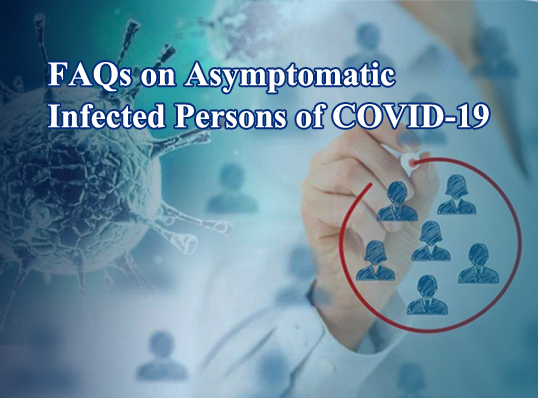
1. How to define asymptomatic cases of COVID-19?
Asymptomatic cases can be divided into two categories:
One is that infected persons who test positive in the nucleic acid test do not show any self-perceived or clinically recognizable symptoms after the 14-day observation of the incubation period and the infection has been asymptomatic.
The other is that infected persons who test positive in the nucleic acid test do not show any self-perceived or clinically recognizable symptoms when sampling, but later develop some clinical symptoms. That is “asymptomatic infection” during the incubation period.
2. Do asymptomatic cases carry highly potent infection capabilities?
For individuals:
On average, each confirmed patient can infect nearly three persons, while, each asymptomatic infected person can infect less than one person;the transmission efficiency of asymptomatic infection is about one third of the confirmed cases.
In general:
The cases infected by asymptomatic patients take up less than 5% of the total number of patients, which indicates that the asymptomatic cases would display relatively weak infectivity. Theoretically, the asymptomatic patients shows no clinical symptoms through which the virus spreads easily.
3. How to identify asymptomatic patients infected with COVID-19?
-- Proactive nucleic acid tests for people under medical observation who were traced to have had close contact with confirmed COVID-19 patients;
-- Proactive nucleic acid tests for people who were traced to be related to COVID-19 case clusters according to relevant investigations;
-- Proactive nucleic acid tests for people who were traced to have been exposed to sources of COVID-19 infection;
-- Proactive nucleic acid tests for people who had a history of travel or residence in the COVID-19 outbreak areas home or abroad.
4. What personal protective measures should be taken?
-- To maintain good personal hygiene: wash your hands frequently; wear masks; stay in well-ventilated areas; conduct regular disinfection; and, take individual dishes serving.
-- To keep a distance of at least one meter from each other in public space; reduce gathering, and avoid crowded places while getting sick.
-- Do not touch your mouth, nose, and eyes before cleaning your hands.
Notice
Don’t panic if you test positive in nucleic acid tests and cooperate with medical institutions in health monitoring, quarantine and medical observation. If you show any symptoms like fever or cough, please make timely reports and accept standard treatment in a medical institution.
Tips
A mini program for inquiring close contacts on trains and planes was recently launched on the State Council mobile app. Via this, passengers can check whether they were on the same train or plane as the confirmed or suspected COVID-19 patients, and seated within three rows in front of or behind the patients. As more attentions are paid on asymptomatic cases, a new function of checking close contacts on the same train or plane with such cases is available. The data updates daily, and can provide information about passengers seating within three rows in front of or behind the asymptomatic confirmed patients in 14 days.
If you were on the same train or plane with, and seated within three rows in front or behind the asymptomatic patients, please report to your community, and do not go outdoors.









